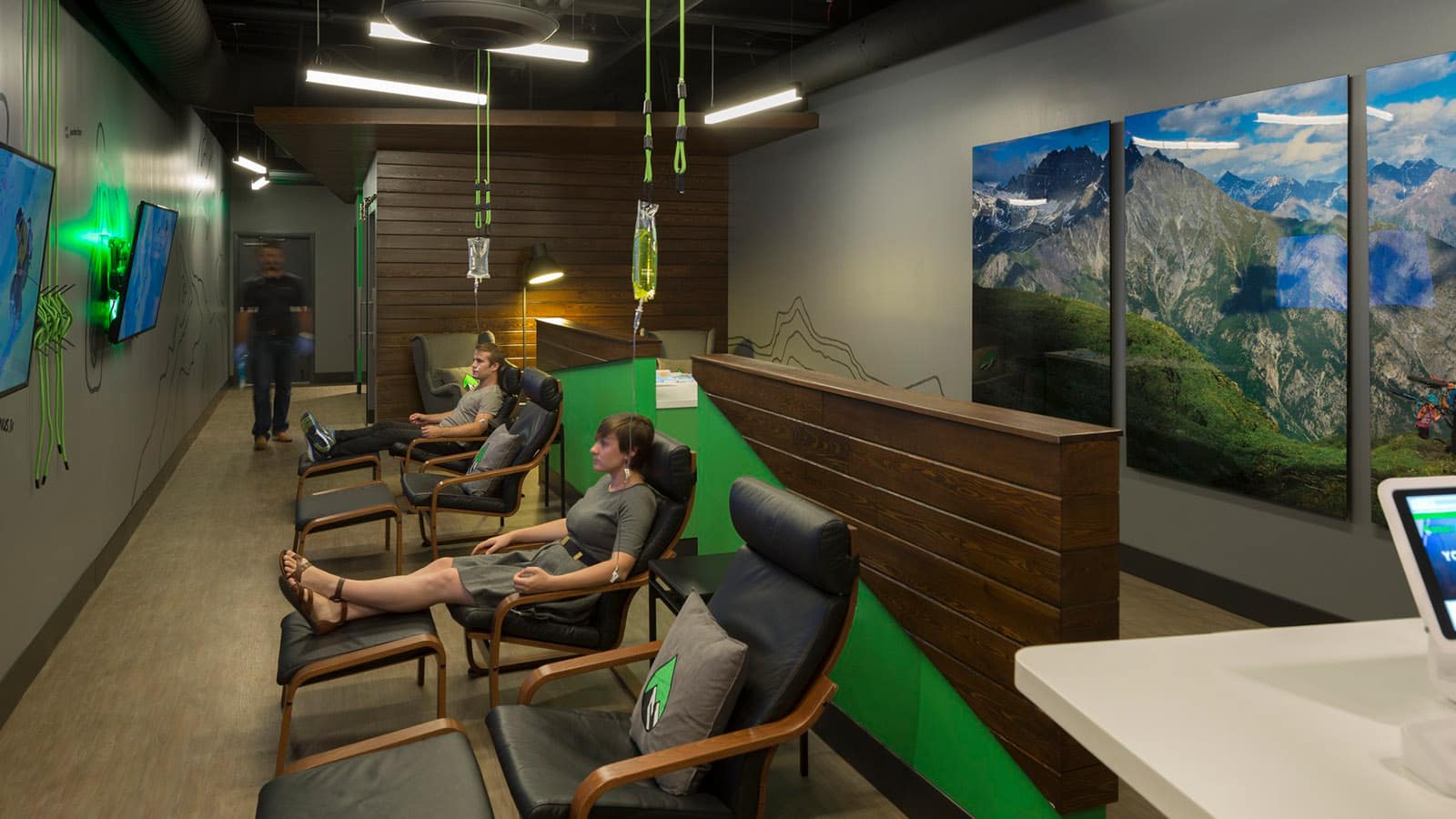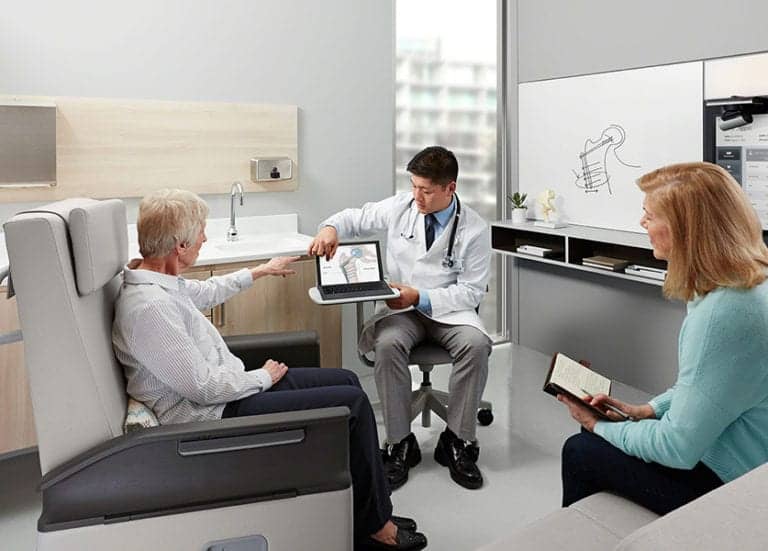By Matt Spaniol | Intermediate Designer
WHY BRANDING AND DESIGN ARE PARAMOUNT TO THE GROWTH OF URGENT CARE CLINICS.
Upon entry to Onus IV Hydration, customers will notice that the space isn’t akin to a typical clinic environment. IV bags filled with a vitamin solution are suspended from the ceiling with climbing ropes and carabiners. The Onus brand, electric green with topography lines inspired by the owners’ passion for mountain biking, fills the space. Technicians who administer treatments are encouraged to leave their scrubs at home. Although the care being delivered isn’t traditional, this retail trend of strongly branded “rollout” facilities has become a model that healthcare systems have begun to acknowledge and use to their strength.
Urgent care clinics and similar healthcare delivery models scattered throughout the country number nearly 10,000 and perform care to roughly 160 million patients yearly. Similarities between these clinics and retail and restaurant franchise chains are numerous. Accessibility to customers, consistency in care and branding, and affordability are franchise models that have inspired the growth of this outward healthcare movement. Clinics are more flexible to visit then with a primary care provider and less costly than a trip to the emergency room when patients have less serious ailments like a pesky ear ache or sore throat.
Among other causes, these developments are a reaction to the needs of the newer generations as they age into the workplace. Just as generational differences have impacted how retailers attract customers, health-tech companies have begun to develop software to a more tech-savvy, experience-driven millennial customer base. Apps such as MyChart, by Epic Systems, allow users to access test results and confirm appointments from their phone. Consumers, as we have observed in the retail industry, increasingly rely on their phones and software to shop. Food and drinks can be ordered before you enter a store via your phone. This convenience that technology offers customers has put pressure on healthcare systems to provide just as efficient of an experience.
The smaller and more localized nature of these projects also support the evolving nature of healthcare technology. Because of the location of these clinics, retail centers and commercial zones, the lease terms tend to be significantly shorter than that of a typical ground-up construction. The ability to relocate or redesign will occur more frequently and allow quicker integration of future technologies.
These factors and trends also affect the type of space in which these facilities locate. Repeatability and efficiency are integral to the implementation of each clinic, but do not equate to cost cutbacks on design and construction . Function and performance of material selection and spatial layout are important to maintaining safety and cleanliness for staff and customers. The integration of experience that healthcare designers and medical planners provide cannot be underestimated. A medical planner’s knowledge is more imperative in locations where spaces are a premium and is aware of the impact each space has within a facility. Whereas a healthcare designer helps tell the story and re-enforces the brand while being sensitive to the rigorous aspects of healthcare design. Cultivating and establishing a brand presence within every facility is imperative to the success of any one location. Utilizing IA’s integrated approach to design, and a wealth of experience in innovative healthcare design, ensures that the considerate and deliberate planning of these facilities achieves consistency and sustainability for this quickly expanding sub-section of the industry.
As healthcare systems and healthtech companies continue to push the boundaries of healthcare delivery, consumers will have increasing choice. Design that fully integrates the brand story of these facilities is vital to maintaining customer relationships. Thoughtful storytelling that is sensitive to the performance of a space is imperative to these franchise-like efforts. Designing recognizable, repeatable and memorable spaces is nothing new to the healthcare industry, but is more essential now than it ever has.
Like What You See?
Learn more about IA's approach to healthcare design. Click below to read "Healthcare in 2018: The Consumer-Driven Patient."


